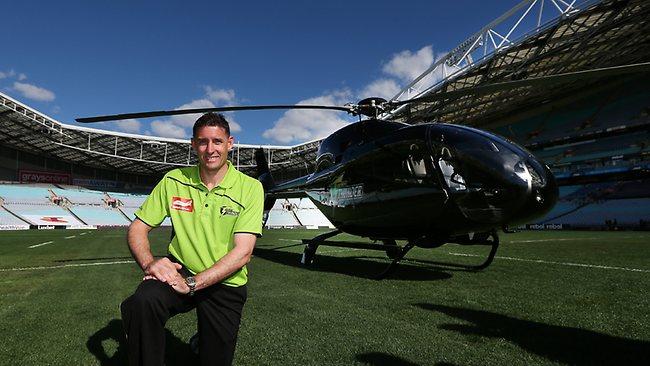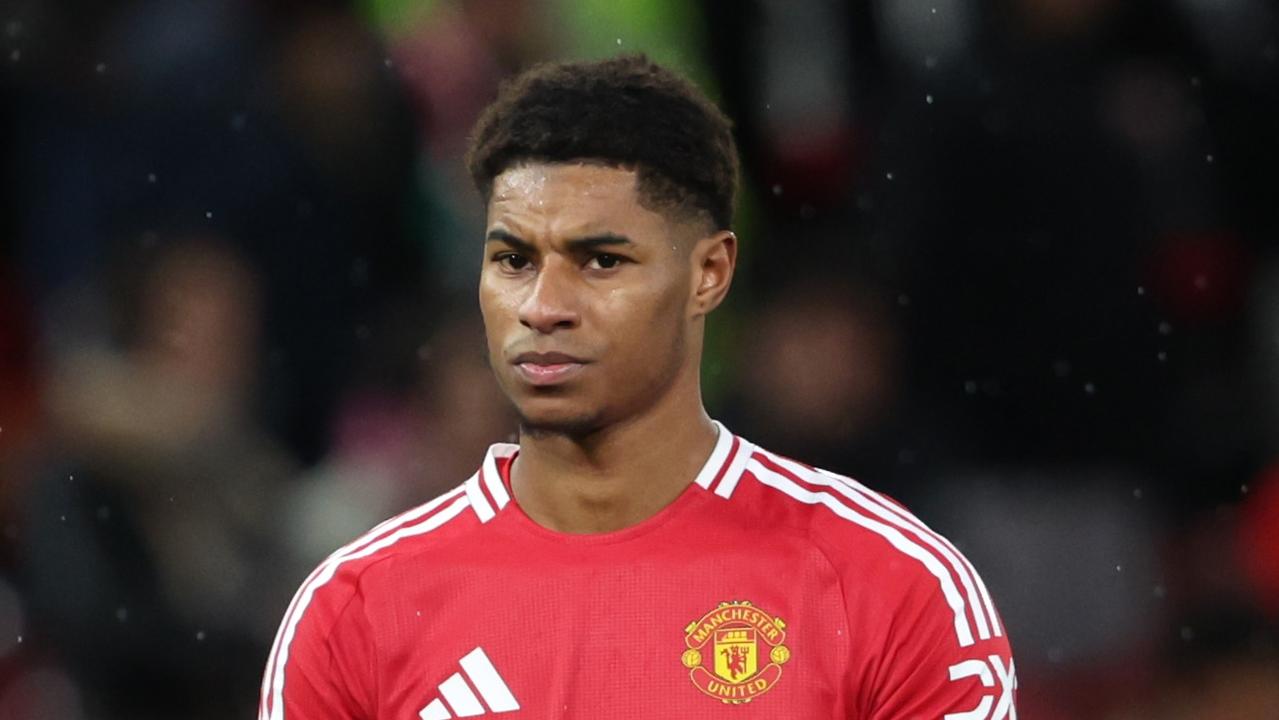Australia's Test hangover stems from Big Bash
THERE was a touch of Allen Stanford about it.

THERE was a touch of Allen Stanford about it.
On Monday, Mike Hussey was flown to Sydney in a gleaming black helicopter with a garish logo, as a way of announcing his transfer of allegiance to a struggling Big Bash franchise. Beware of administrators fawning over guests in black helicopters.
There is no suggestion of financial impropriety here, but it was a sign of how far Cricket Australia (CA) is out of kilter with the public mood.
The paint had barely dried on the England honours board, before CA was congratulating itself on the marketing success of the Big Bash League (BBL), which is driving "a new diverse fanbase" to the game, just as it drives a generation of young cricketers farther from the principles that underpinned two decades of cricketing pre-eminence.
In some ways, Twenty20 is an easy target. It hasn't stopped Cheteshwar Pujara, India's run-hungry No3, for example, from becoming an outstanding Test-match batsman with a penchant of batting long and big. Observers close to the Australian scene, though, were highlighting the dangers of CA's infatuation with the BBL long before the present crisis hit home - and with reference specifically to the problems of finding the next generation of Test-class batsmen, which is Australia's most pressing need right now.
Two summers ago, in the aftermath of England's Ashes win Down Under and at a time when Australia should have been planning for the present campaign, Gideon Haigh asked the question, "Where is the next Simon Katich coming from?" in response to Katich's dumping from the central contract list. Not, note, the next Ricky Ponting, or Steve Waugh, players that elevate good teams to great, but Katich - a good, solid, productive first-class and Test-class batsman of the type that every generation should have in sufficient numbers to remain competitive.
His point was twofold: a warping of incentives, which meant state contracts being downgraded in worth compared with BBL contracts, so incentivising the wrong type of player for Australia's Test future. Players such as the "million dollar man", Glenn Maxwell, a bits-and-pieces cricketer who will end up rich but is unlikely to influence Australia's Test team. "Incentives shape outcomes," Haigh wrote.
Then there was the havoc that the BBL was playing with the domestic fixture list, which was being moulded away from its traditional format into something more convenient for Twenty20 but which was hurting the Test team. That trend has continued apace: in the badly timed announcement about the BBL on Monday was the news that the tournament has been expanded from 44 days to 58, with an exclusive window between early December and late January.
It will be available on free-to-air Channel Ten. Given that the Lord's Test last week was aired on Channel Nine's outshoot station Gem, and was out-rated by Shaun the Sheep on another channel, it is not hard to envisage viewers deserting Test cricket if the team's woes continue. Cricket Australia will find a way to market that as a positive, too, no doubt. A new audience for a new cricket channel...
The reshaped fixture list is not helping young batsmen, or the selectors, who have precious little evidence to go on at certain times in the calendar.
The example of Alex Doolan, of Tasmania, was highlighted by John Inverarity, the national selector, last year and is instructive.
Doolan began the first-class season well, scoring a hundred against South Australia, a big one against the South Africans and 95 against Victoria, but then did not play a single first-class game in December or January, after which his productivity, not surprisingly, declined.
"The cricket scene is more fragmented than it was," Inverarity said. "If you had said ten years ago that there would not be any first-class cricket in December or January, I would have said that was not possible."
That Hussey was the poster boy for CA's infatuation with Twenty20 was deeply ironic. His absence highlights two of the problems facing Australia now, one being immediate, the other structural. Hussey would not have retired prematurely had the dressing-room atmosphere (or "culture", to use the buzzword) been right. At the time, he said that he had to keep his impending departure quiet for fear of being axed, which seems a strange way to think of treating a senior and respected player. When you consider the 14-run margin of the Trent Bridge Test, it is hard not to think that Hussey would not have made a difference.
At the moment, Australia are self-destructing in so many ways: DRS decision-making; allowing people from outside the environment to deal with discipline (David Warner's ban being the prime example); revelatory tweets that explain why Hugh Morris, the managing director of England cricket, made the analogy with monkeys and machineguns; statements from key officials that are just plain stupid (after the Trent Bridge Test, Pat Howard said at a function that Australia were a better side man for man.) These things are easy to correct.
The deeper problems of the paucity of talented batsmen will take longer to solve. Looking back to the 1994-95 England tour of Australia, it is startling to recall the Australia A team who played in the one-day series that summer. They beat England in one match, ran Australia close and included Darren Lehmann, Matthew Hayden, Damien Martyn, Justin Langer, Ricky Ponting, and Michael Bevan. Even a decade ago, Australia A team were staffed by Matthew Elliott, Martin Love, Greg Blewett, Jamie Cox and Michael Clarke.
Once young players are given sufficient first-class opportunity (the fixture list again) there is no short cut away from the hard work that Hussey put in to transform himself from a weedy nudger and nurdler at Wanneroo to a fine Test batsman. The days off he eschewed when his team-mates went to the beach and he went to the nets; the six-hour stints he put in at the bowling machine to replicate a day's play and the berating of Rod Marsh for not working his fellow Academicians hard enough being examples of Hussey's appetite for hard work.
When Australia lost on Monday, the image of Hussey was a fitting one. Not Hussey the marketed face of Twenty20, but Hussey the first-class cricketer who learnt his trade the hard way, was forced to wait for his Test debut until he was 30 years of age and had scored 15,000 first-class runs before doing so. There are no short cuts to excellence.
The Times



